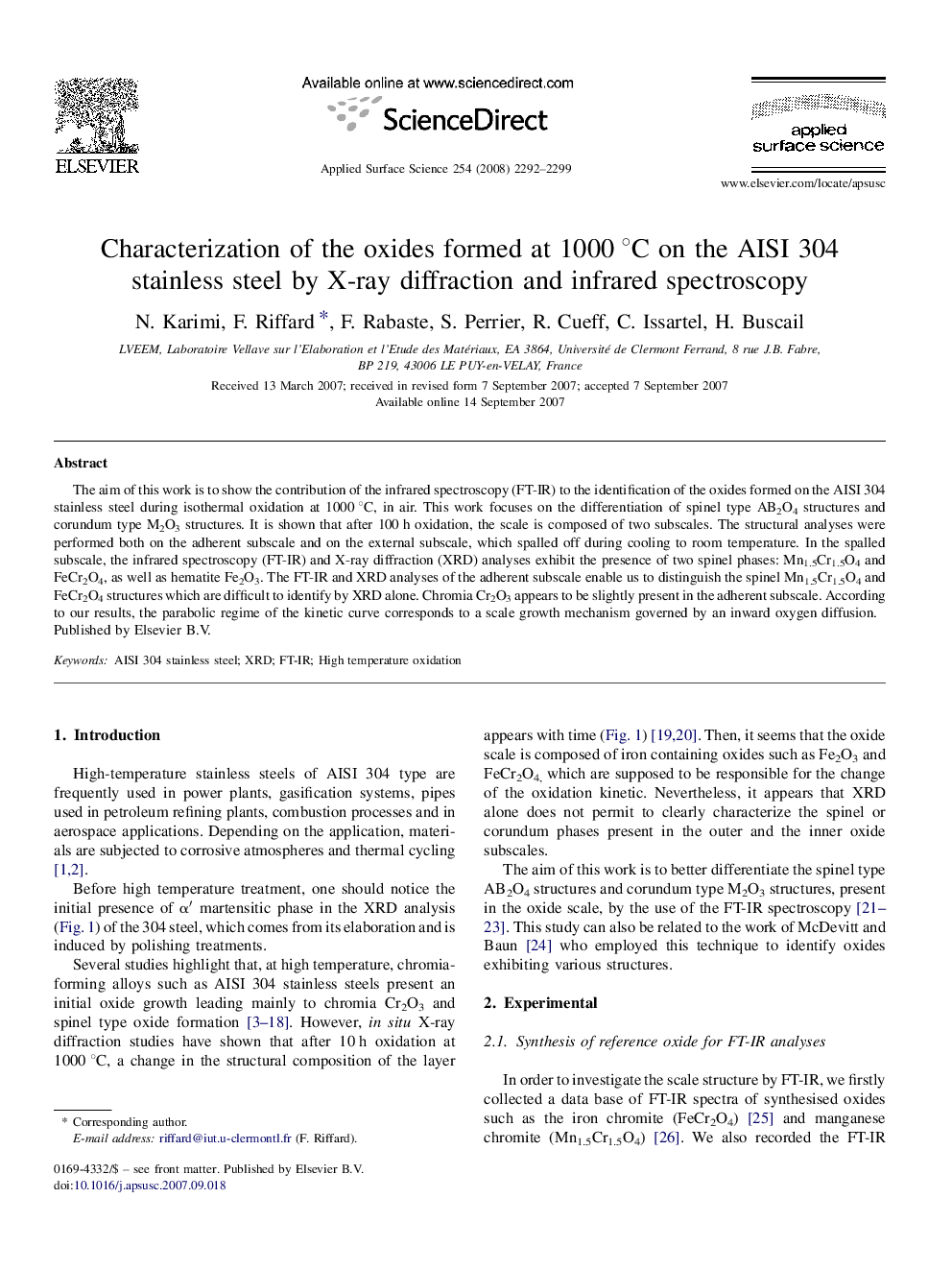| Article ID | Journal | Published Year | Pages | File Type |
|---|---|---|---|---|
| 5365850 | Applied Surface Science | 2008 | 8 Pages |
The aim of this work is to show the contribution of the infrared spectroscopy (FT-IR) to the identification of the oxides formed on the AISI 304 stainless steel during isothermal oxidation at 1000 °C, in air. This work focuses on the differentiation of spinel type AB2O4 structures and corundum type M2O3 structures. It is shown that after 100 h oxidation, the scale is composed of two subscales. The structural analyses were performed both on the adherent subscale and on the external subscale, which spalled off during cooling to room temperature. In the spalled subscale, the infrared spectroscopy (FT-IR) and X-ray diffraction (XRD) analyses exhibit the presence of two spinel phases: Mn1.5Cr1.5O4 and FeCr2O4, as well as hematite Fe2O3. The FT-IR and XRD analyses of the adherent subscale enable us to distinguish the spinel Mn1.5Cr1.5O4 and FeCr2O4 structures which are difficult to identify by XRD alone. Chromia Cr2O3 appears to be slightly present in the adherent subscale. According to our results, the parabolic regime of the kinetic curve corresponds to a scale growth mechanism governed by an inward oxygen diffusion.
